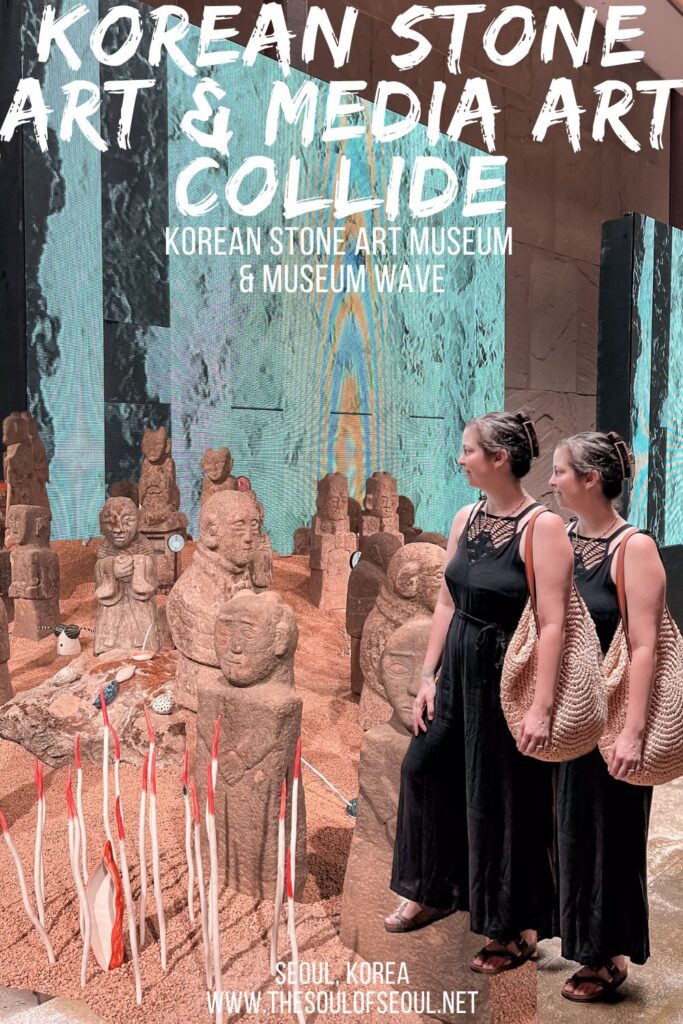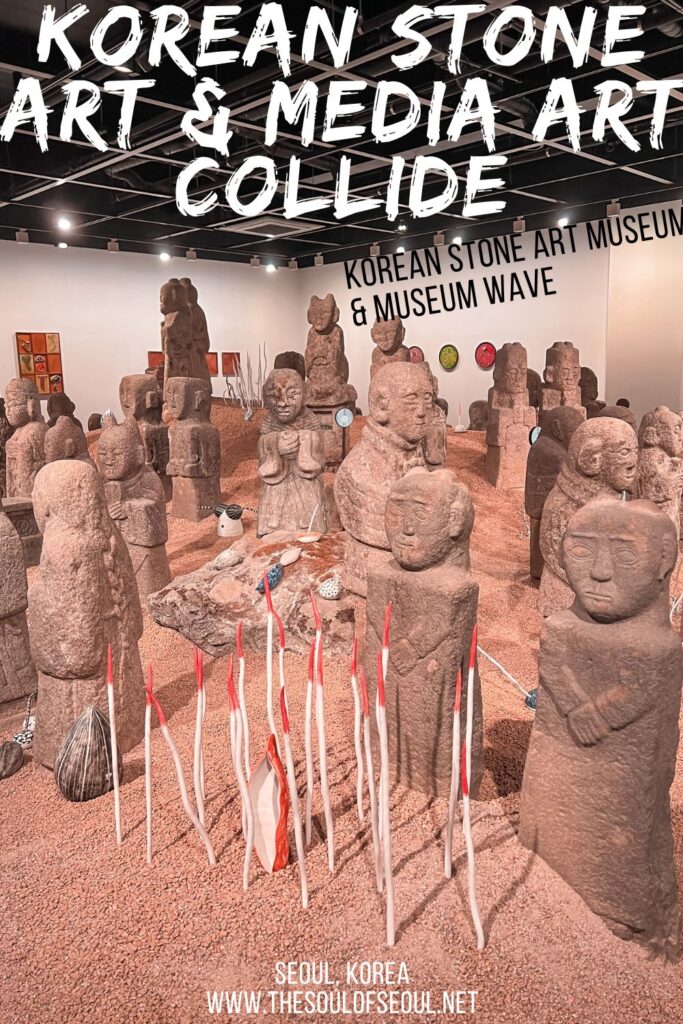The Korean Stone Art Museum Now Museum Wave: Statues & Media Art
Last Updated on April 4, 2024
It’s always fun to find the museum gems in Seoul, Korea and finding them when no one else is there. I’ve visited and love to continually visit the numerous art museums in Seoul, but recently, I made my way to the Korean Stone Art Museum (우리옛돌박물관), nestled in the picturesque Seongbuk-dong district. The museum has undergone a transformation and now there’s also a Museum Wave (뮤지엄 웨이브). From contemporary art to cultural stories and statues, this is a cool museum to find in Seoul.
Set on the side of a mountain, it’s not the easiest place to find (actually, it’s easy to get to via public transportation, but it’s not right outside of a subway station). This means, it can often be quiet but is worth the subway to bus trip up.
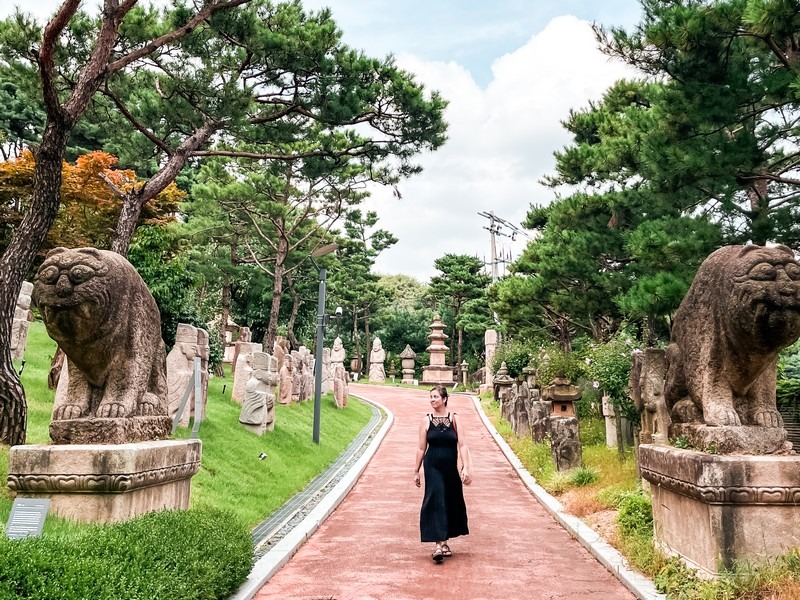
From history and culture at the Korean Stone Art Museum to contemporary art at Museum Wave, here’s what to know to visit both at one time:
(This post contains affiliate links, which means I receive a certain percentage of a sale if you purchase after clicking at no cost to you. Thank you for your support.)
How To Get There
Address: 330-1 Seongbuk-dong, Seongbuk-gu, Seoul (서울시 성북구 성북동 330-1)
By Public Transportation: From Hansung University Station, exit 6, go just up the street to the nearby bus stop where you can catch local bus 02. This bus goes all the way up to the museum. Actually, the museum is the last stop on the 02 line. The bus will stop here and make a u-turn and then go back down.
I say this because, basically the driver will know to shove you off at the last stop if you don’t know where you are. This is also awesome because then you can take the bus all the way back down as well. Which is nice as it’s up on the side of a mountain.
Basic Info
Hours: Mondays, Saturdays, Sundays: 10:00am ~ 6:00pm; Tuesdays, Thursdays, Fridays: 10:00am ~ 5:00pm
Admission: Because the museum is now two in one, there is the option to just see Museum Wave, just see Korean Stone Art Museum, or get a two-in-one ticket. Ask for the options when you’re there.
- Korean Stone Art Museum: Adults: W7,000; Youth: W5,000; W3,000
- Museum Wave: Adults: W12,000; Teenagers: W8,000; Children: W5,000
Websites: http://www.koreanstonemuseum.com/ AND https://www.museumwave.com/

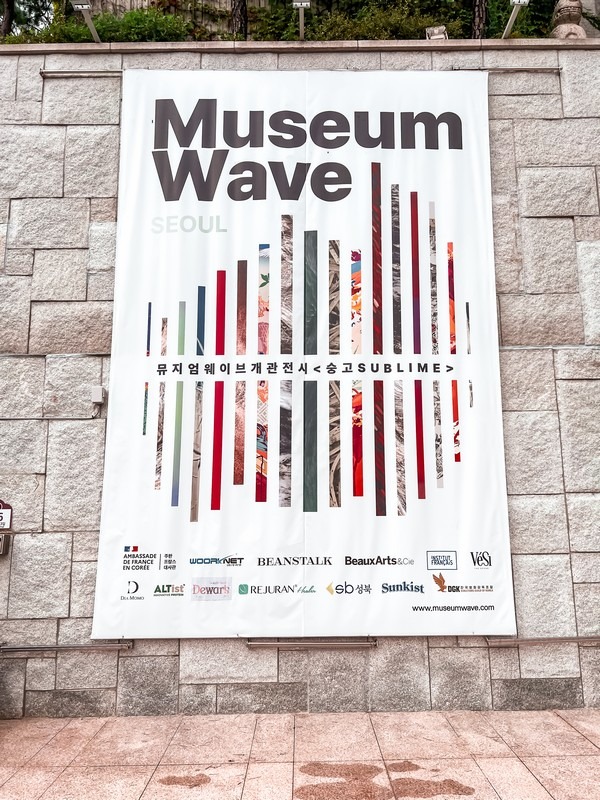
What To Know
The Korean Stone Art Museum, a sanctuary for ancient stone sculptures, has newly emerged as “Museum Wave,” a dynamic art space that aims to capture the hearts of younger audiences. Don’t be confused like I was though, the Korean Stone Art Museum is still there, but now there are also very cool media art projects too. Basically, it’s like visiting two museums in one place. This regeneration is a testament to the museum’s commitment to evolving with the times while preserving the essence of its heritage.
WooriNet, a local broadband provider, is the visionary behind the transformation. In a strategic move to make a mark in the K-culture scene, WooriNet acquired StART Art Korea, a commercial art company, solidifying its dedication to the world of art and culture. This metamorphosis represents a bold step toward redefining the role of traditional museums in the contemporary world.
What To See Inside
The inaugural exhibition at Museum Wave, titled “Sublime,” kicked off on June 17, 2023 curated under the guidance of French media artist and producer, Daniel Kapelian. What sets “Sublime” apart is its deliberate inclusion of artists who had not previously exhibited in Seoul, so the show was diverse and an eclectic showcase of artistic perspectives.
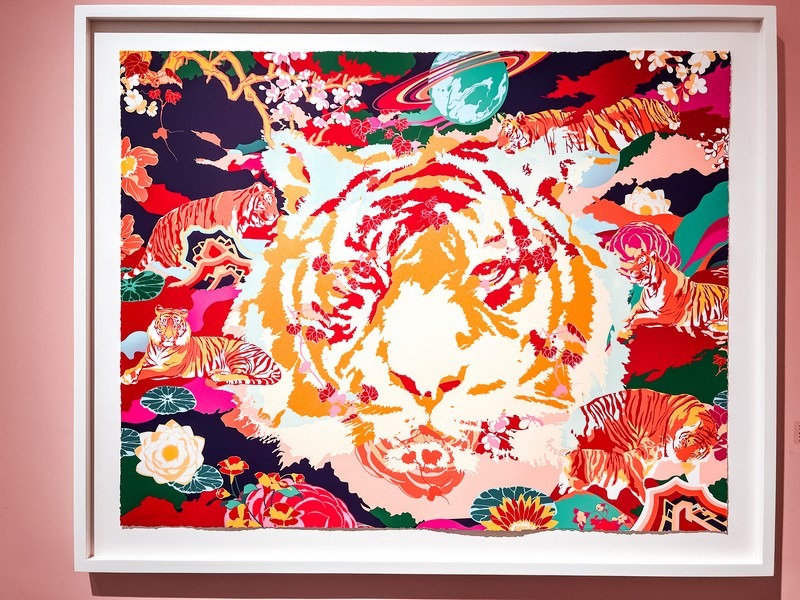
One of the featured artists in “Sublime” was Jacky Tsai, a Chinese artist based in London, who presented his works for the first time in Korea. Tsai is renowned for his skillful fusion of multimedia, incorporating acrylic paintings, silk-screen prints, lacquer carvings on wood, and even porcelain. His illustrations are playful and combine Eastern and Western imagery in a pop-art-like style.
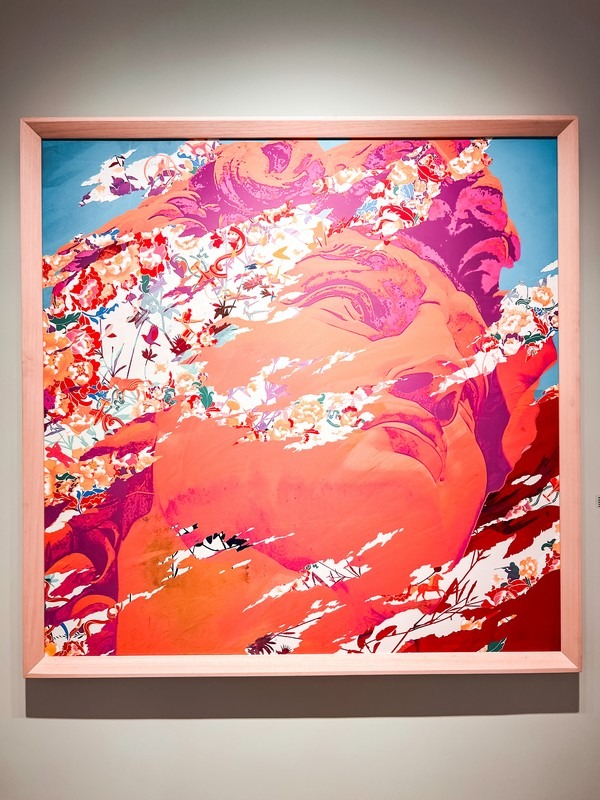


From the ground floor you walk up and walk up and continue to just walk up along what is referred to as “Longevity Road”. This zig zagging pathway takes you from the first floor up to the top floor where you can continue perusing the art.

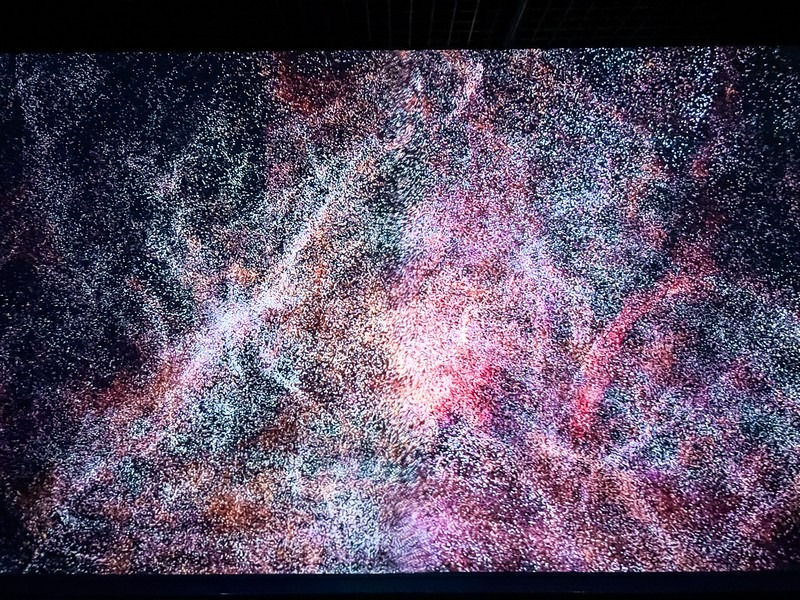


Also within the exhibition was an extended reality installation called “Evolver” created by the French studio Atlas V. This immersive installation offered visitors a meditation session, followed by a captivating VR journey through the flow of oxygen in a landscape reminiscent of the human body. The narration for this experience was provided by actor Lee Jung-jae in Korean and Cate Blanchett in English.
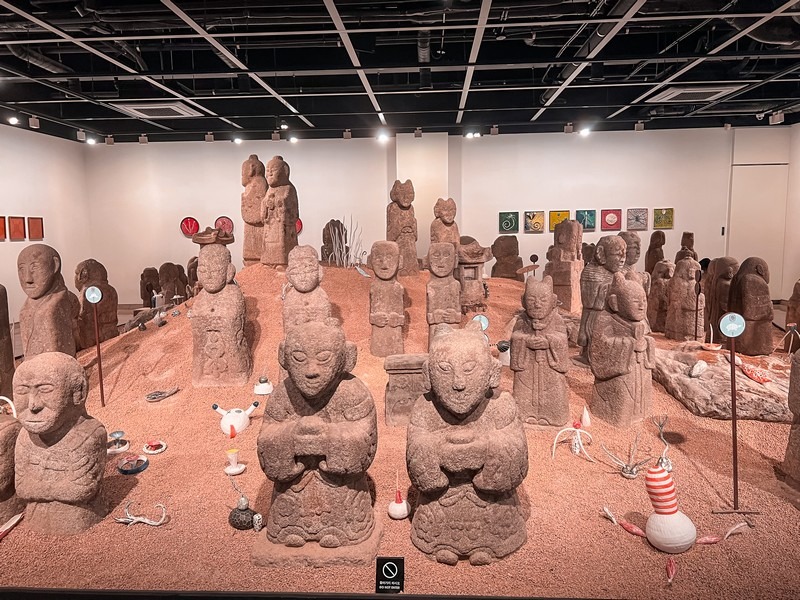
Work your way up and you’ll start to see some of the Korean stone art intertwining with the contemporary art. Some of the interesting statues you can see include:
- Muninseok: A human-shaped stone sculpture made to protect tombs against evil spirits, along with other animal-shaped stone sculptures. Muninseok are portrayed as wearing official hats and holding a Hol, an object held by courtiers when they were addressing the king.
- Dongjaseok: Dongja is a child attendant while Dongjaseok is a stone figure of dongja. Found in and around Seoul, these sculptures were placed before the graves of high-ranking government officials or members of the royal family, except for kings and queens, during the 16th-18th centuries. Wearing plain clothes and double-knot hairdos, they stand obediently and submissively in front of the graves, lending an appearance of vitality to the solemn atmosphere of the graveyard. Dongja were deemed to serve various gods in Taoism, the Buddha in Buddhism, and the occupants of the graves in Confucianism. Therefore, the shape and role of dongja vary from grave guardian to village guardian depending on the religion.
- Beoksu: People in the past believed that Beoksu, standing at the entrance to a village or at the end of a street, protected them from evil spirits and illnesses. Since Beoksu were thought to possess superpowers that can bring good fortune and prevent troubles, people prayed to Beoksu in the hope of making their wishes come true.
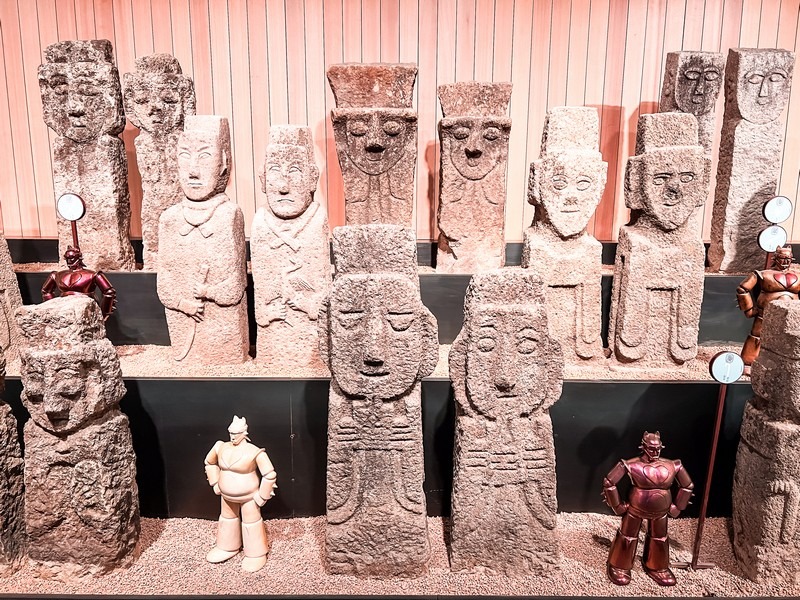

What To See Outside
Exit out of the rooftop of Museum Wave and you’re at the topmost point of the Stone Garden. This is ideal because seeing the stone statues then includes a walk down the mountain rather than a walk up.
The outdoor stone garden is where you can find hundreds of historical Korean stone statues that tell a story. From the exit of the interior space, see the statues from Jeju Island. Read the signs to learn more about the dolharubangs, the stone pagodas, the dongjaseoks, and more.
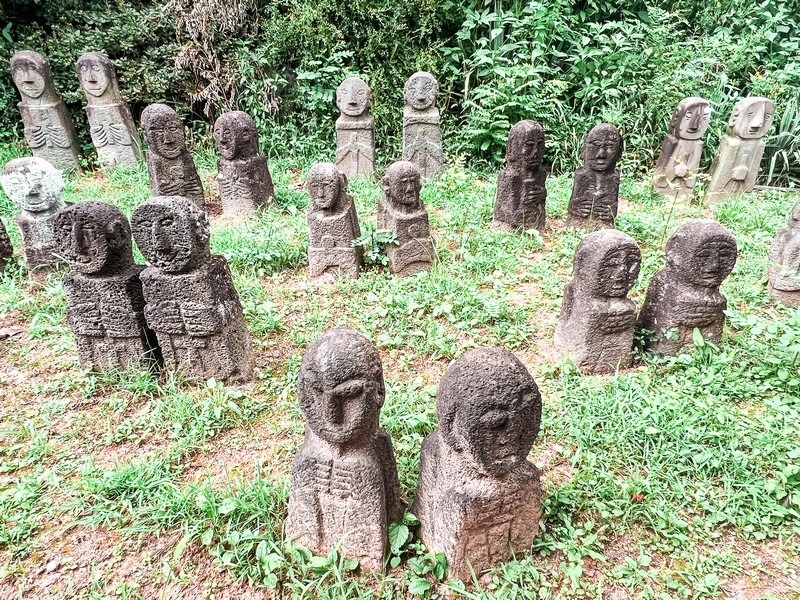
Look for the:
- Tall statue with dragon carvings: A dragon-engraved stonework used in rain rituals. As dragons were symbolically portrayed as the “god of water” in many Eastern cultures, precipitation rituals were held in the presence of a dragon-engraved stonework or in front of a dragon-shaped rock or well. This statue is just on the rooftop of Wave before you enter the garden.
- Jangmyeongdeung: A stone lantern called Jangmyeongdeung was placed to light up a graveyard. Apart from its practical function, Jangmyeongdeung also had a spiritual function to pray for the eternal life in heaven for the deceased.
- Bats: Look closely at the carvings to find bats, a symbol of happiness and fertility.
- Clouds: Clouds carved into the stone meant immortality and abundance.
- Statues holding fans: Look closely to find the statues holding a statue. These meant they were warding off evil spirits and bringing good fortune.
- Turtles: A symbol of good health, longevity, and fertility if you see it carved into a stone.
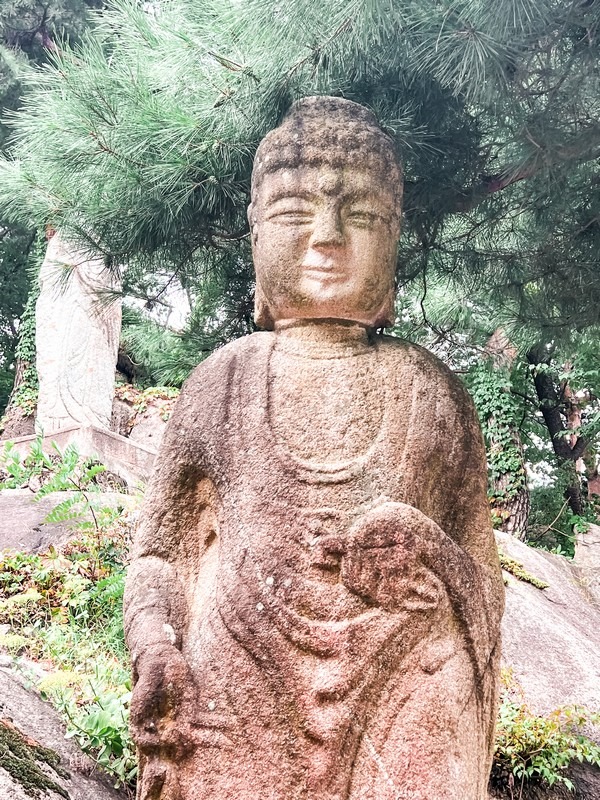
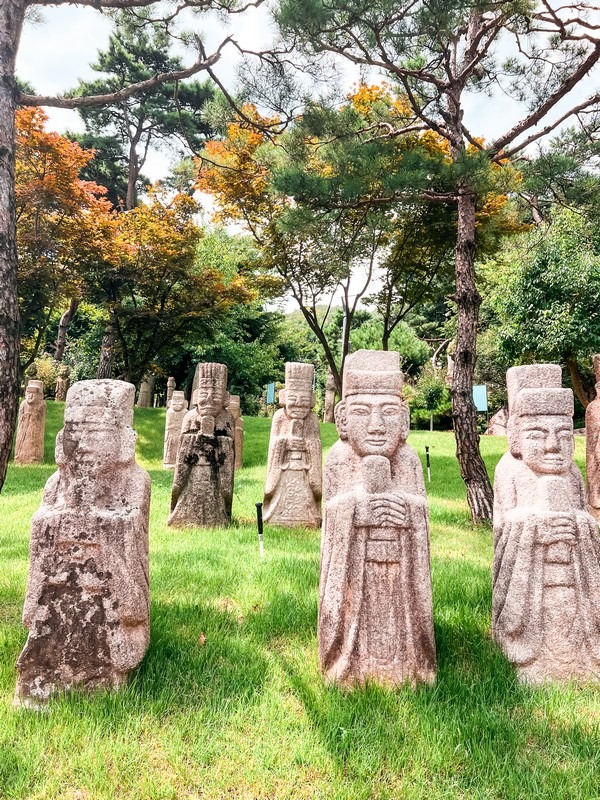
Stone sculptures impacted numerous aspects of everyday life in Korea as they were symbols of various folk beliefs. Women, hoping to conceive would visit stone statues of children and pray. Guardian statues were believed to provide protection and could come in the form of everything from a warrior to a musician or scholar. The Stone Garden is an intriguing area cluttered with the generally forgotten pieces of the past.

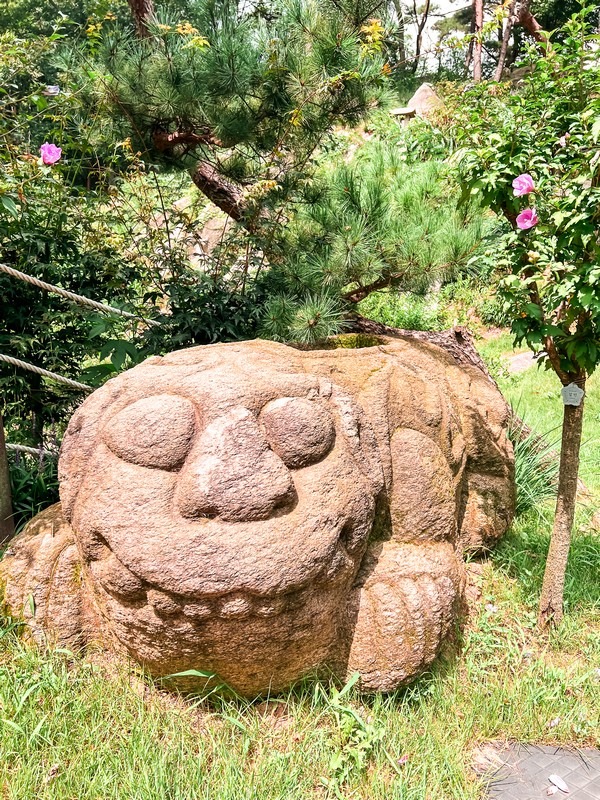
The garden exudes a spiritual ambiance, bridging the old with the new. After the contemporary art and media art inside, the traditional stone sculptures are like a string that bring us back to earth reminding us of history and tradition.
Located in the serene Seongbuk-dong district, this dynamic art hub invites guests to explore the evolving intersection of tradition and modernity. The Korean Stone Art Museum, reborn as Museum Wave, or maybe more aptly considered combining with the Korean Stone Art Museum is an interesting example of how Korea continually regenerates spaces from history to make them more interesting in the present. It’s a space where the past meets the present, and tradition embraces modernism.
Did you like this post? Pin IT!
